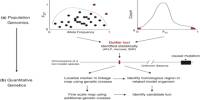Plant hormones (or phytohormones) are signal molecules produced within plants that occur in extremely low amounts. These are signaling molecules produced by plants that play an important function in regulating many physiological processes. These hormones help plants respond to external changes and internal stimuli, allowing them to adapt and flourish.
Plant hormones regulate many aspects of plant growth and development, including embryogenesis, organ size regulation, pathogen defense, stress tolerance, and reproductive development. Unlike animals, where hormone production is limited to specialized glands, each plant cell is capable of manufacturing hormones. Went and Thimann created the word “phytohormone” and used it as the title of their 1937 book.
Phytohormones are found across the plant kingdom, including algae, where they perform tasks comparable to those seen in vascular plants (“higher plants”). Some phytohormones are found in microorganisms such as unicellular fungi and bacteria, however they do not serve a hormonal role and are better classified as secondary metabolites.
There are several major classes of plant hormones, each with its own specific functions:
- Auxins: Auxins are in charge of regulating cell elongation and growth, especially at the stem and root tips. They also contribute to phototropism (growth in the direction of light) and gravitropism (reaction to gravity). IAA (indole-3-acetic acid) is the most well-known auxin.
- Gibberellins: Gibberellins increase stem length, seed germination, and fruit development. They also control a variety of plant growth and development processes, such as flowering and the transition from vegetative to reproductive growth.
- Cytokinins: Cytokinins are proteins that have a role in cell division and differentiation. They aid in the promotion of lateral bud growth, the delay of senescence (aging), and the regulation of root growth. Zeatin and kinetin are two forms of cytokinins.
- Abscisic Acid (ABA): ABA is often called the “stress hormone” because it plays a crucial role in the plant’s response to environmental stressors, such as drought, salt, and cold. It helps plants conserve water by closing stomata and promoting seed dormancy.
- Ethylene: Ethylene is a gaseous hormone involved in various aspects of plant growth and development. It regulates fruit ripening, leaf and flower senescence, and responses to mechanical stress and pathogens.
- Jasmonic Acid (JA): Jasmonic acid is involved in the plant’s response to biotic stresses, such as herbivore attacks and pathogen infections. It also plays a role in regulating various aspects of plant development, including root growth and senescence.
- Salicylic Acid (SA): Salicylic acid is most closely linked to the plant’s reaction to pathogen infections. It activates pathogen defense mechanisms and induces the synthesis of pathogenesis-related proteins.
These plant hormones frequently collaborate in a complicated network to control growth, development, and responses to environmental cues. The balance and coordination of these hormones is critical for plant health and well-being.
















